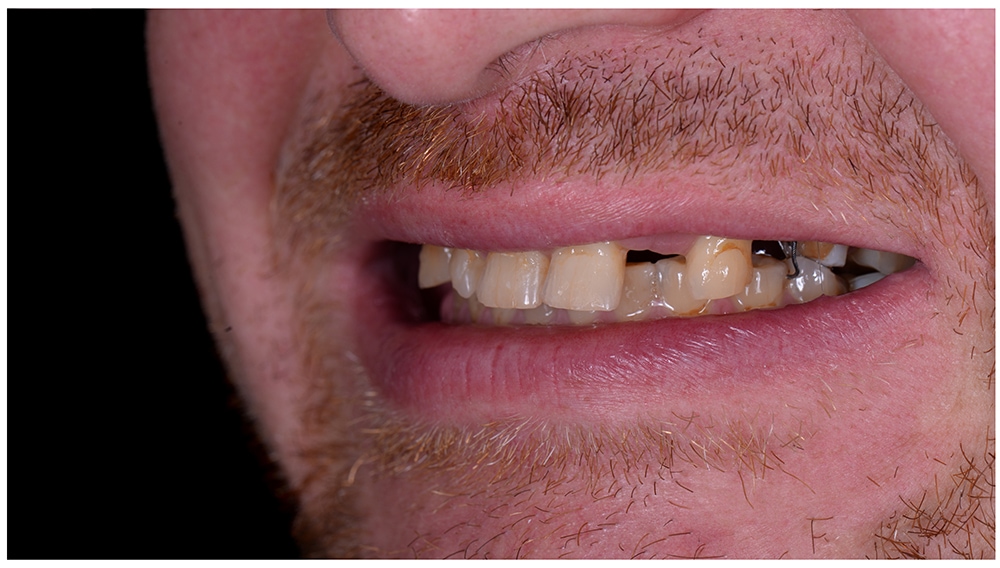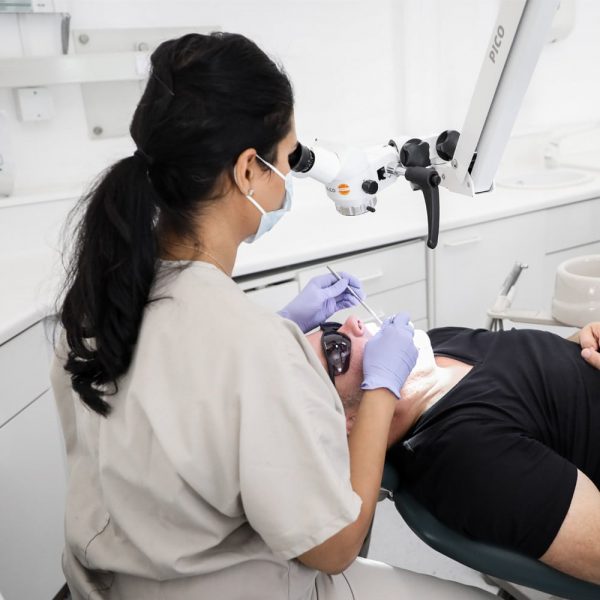While root canal treatment (aka endodontic therapy) is often successful in the hands of a specialist endodontist, it is not without potential complications, which may adversely affect the outcome. These complications may include:
- Instrument fractures
- Sodium hypochlorite accidents
- Tooth discoloration
- Poor-quality root filling
- Inferior alveolar nerve damage
A thorough understanding of these complications is crucial for the prevention, timely diagnosis, and management to ensure the best possible prognosis.
Root Canal Instrument Fractures.
Specialists endodontists occasionally face endodontic therapy instrument fractures wherein a segment of the metal file used during the procedure may break and remain inside the tooth. This complication is one reason why seeking the care of a specialist is useful as specialist dentists are trained to retrieve the fractured instrument. They will therefore attempt to do it straightaway. This occurrence is influenced by factors such as the narrowness, curvature, length, calcification, and the number of roots of the tooth being treated.
- Ensure straight-line introduction of files
- Create a glide path before using larger taper NiTi files
- Use rotary instruments at recommended speed and torque settings
- Adopt a single-use file policy
These practices can enhance success rates and outcomes of the procedure.
Even with a broken file segment, provided the canal has been sufficiently cleaned, the tooth's longevity and function can be preserved in the hands of a specialist.
Root Canal Sodium Hypochlorite Leak
Essentially, the sodium hypochlorite can, very occasionally, leak outside the tooth and come in contact with bone (entry into the periapical space) despite meticulous precautions taken during endodontic therapy treatment. This event is characterized by severe pain, swelling, haematoma, and ecchymosis.
| Aspect | Description |
| Cause | Often due to excessive pressure or an unusually large apical foramen |
| Resolution | Usually self-resolves within 2-5 weeks |
| Impact on Treatment Outcome | Can affect the success rates of the primary root canal treatment |
In a prospective cohort study, such incidents were shown to impact the outcome of endodontic therapy. Therefore, careful handling and appropriate technique are essential to prevent such accidents. This is incredibly rare in the hands of a specialist endodontist.
Tooth Discolouration.
Tooth discolouration is a common complication of primary endodontic therapy. This condition can impact the aesthetic result of restorative dentistry and may lead to further procedures such as tooth extraction.
It is suggested that the discoloration is due to internal staining from: Residual pulp tissue becoming necrotic and staining the tooth from the inside - endodontic therapy materials, such as gutta-percha and sealer cements. The lack of pulp pressure in dentinal tubules leads to the increased incorporation of dietary stains in dentin causes staining. In addition, inadequate removal of decayed discoloured tooth structure during the original treatment could be a reason for discolouration.
Poor-quality Root Canal Filling
A poor-quality root filling seriously jeopardizes the outcome of a primary endodontic therapy. When the canal system is not completely cleaned or filled, or the filling material is extruded from the apex, the success rates drastically plummet. Infections may develop in the surrounding bone, as indicated by dark circles at the bottom of the tooth roots in X-ray images.
Such factors can lead to treatment failure, requiring either an endodontic retreatment or tooth extraction and implant placement. The quality of root filling is a critical factor in the treatment's success hence our recommendation to see a specialist dentist.
Inferior Alveolar Nerve Damage.
Nerve damage, which usually happens in the lower jaw due to the anatomy, is typically characterised by symptoms such as: - Tingling or burning sensation in the mouth - Loss of feeling or numbness affecting chewing and speaking - Temporarily or permanently altered sensation. This happens for the same reasons as the hypochlorite leak above i.e. the root canal files OR gutta percha damage the nerves around the teeth. This complication is most likely to happen in the lower jaw (premolar and molar regions) and is best prevented by seeking the care of root canal specialists (who are trained to minimise this risk as much as is humanly possible.

















